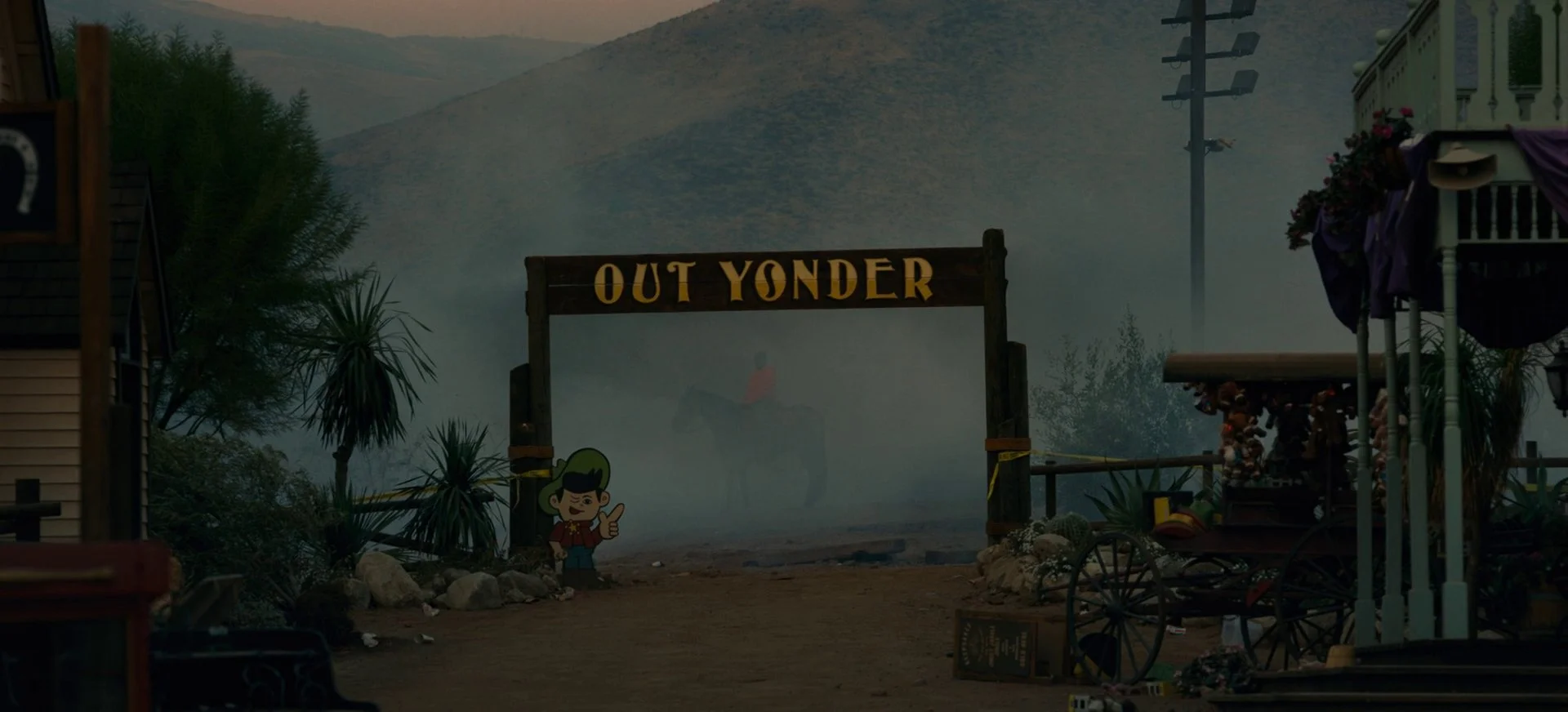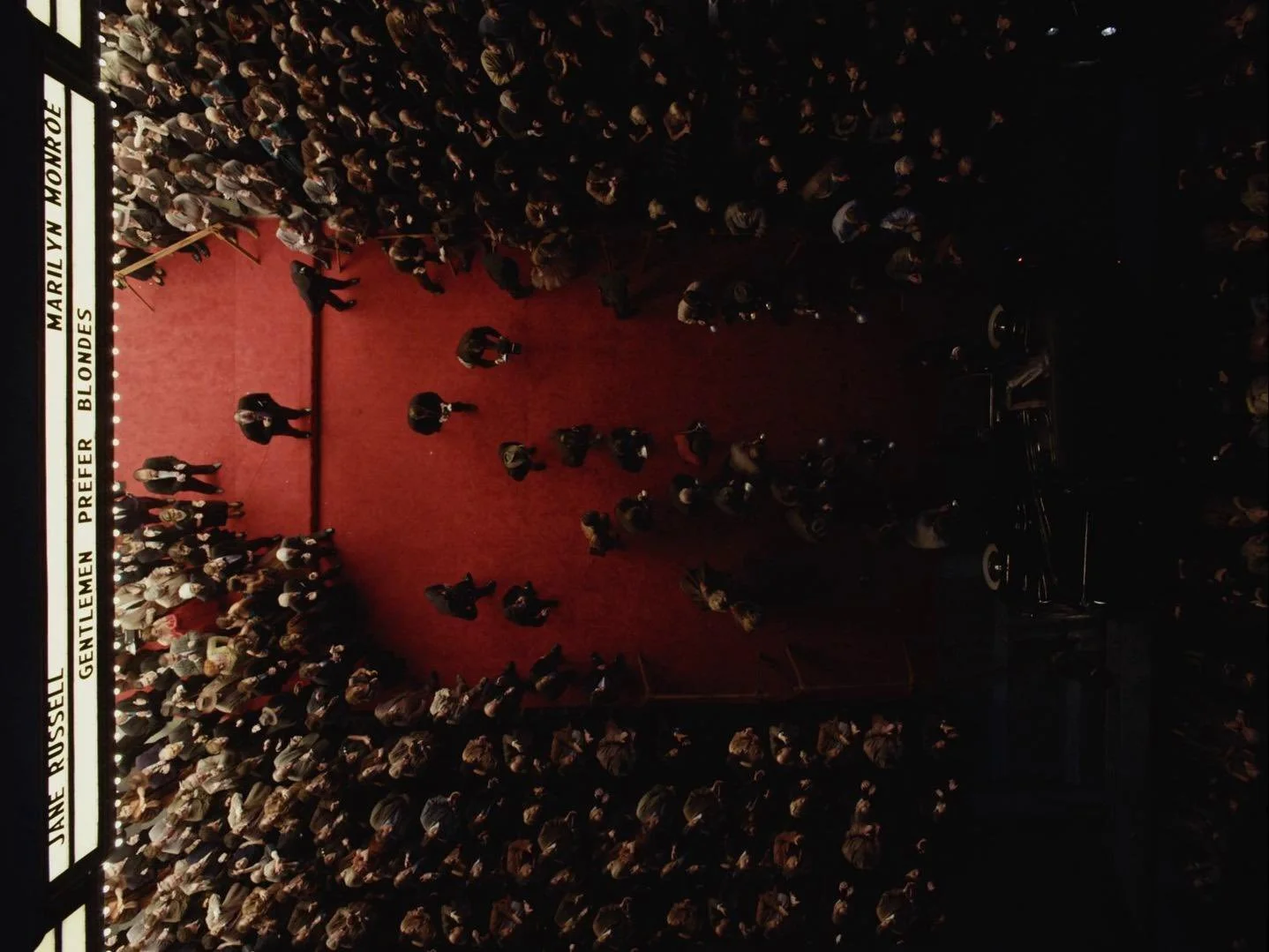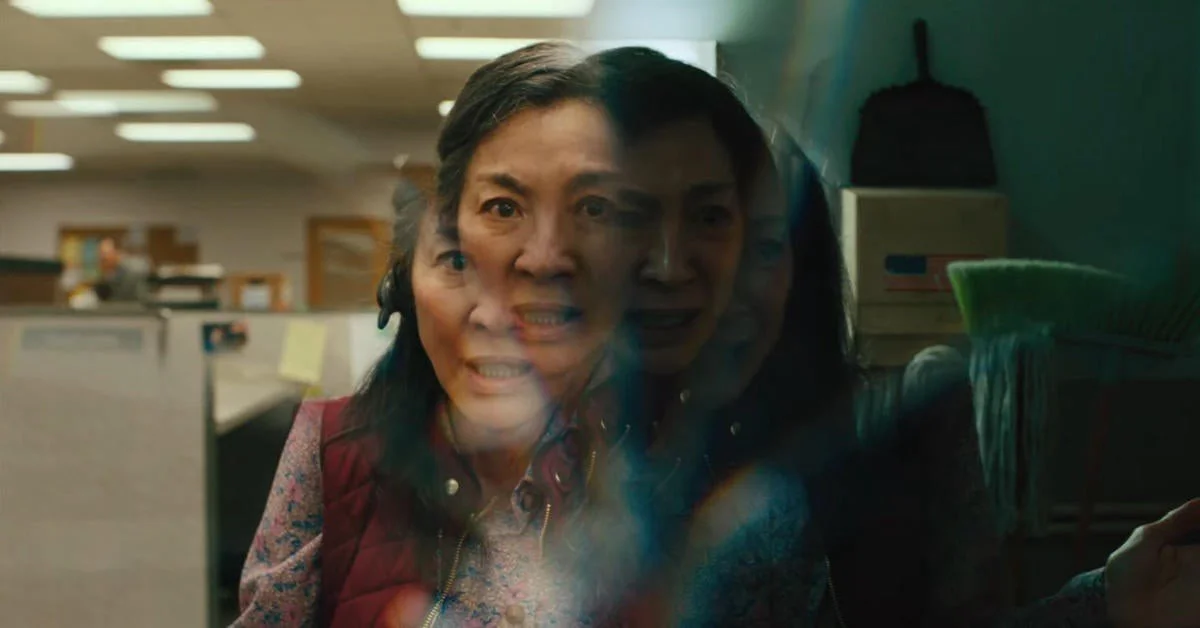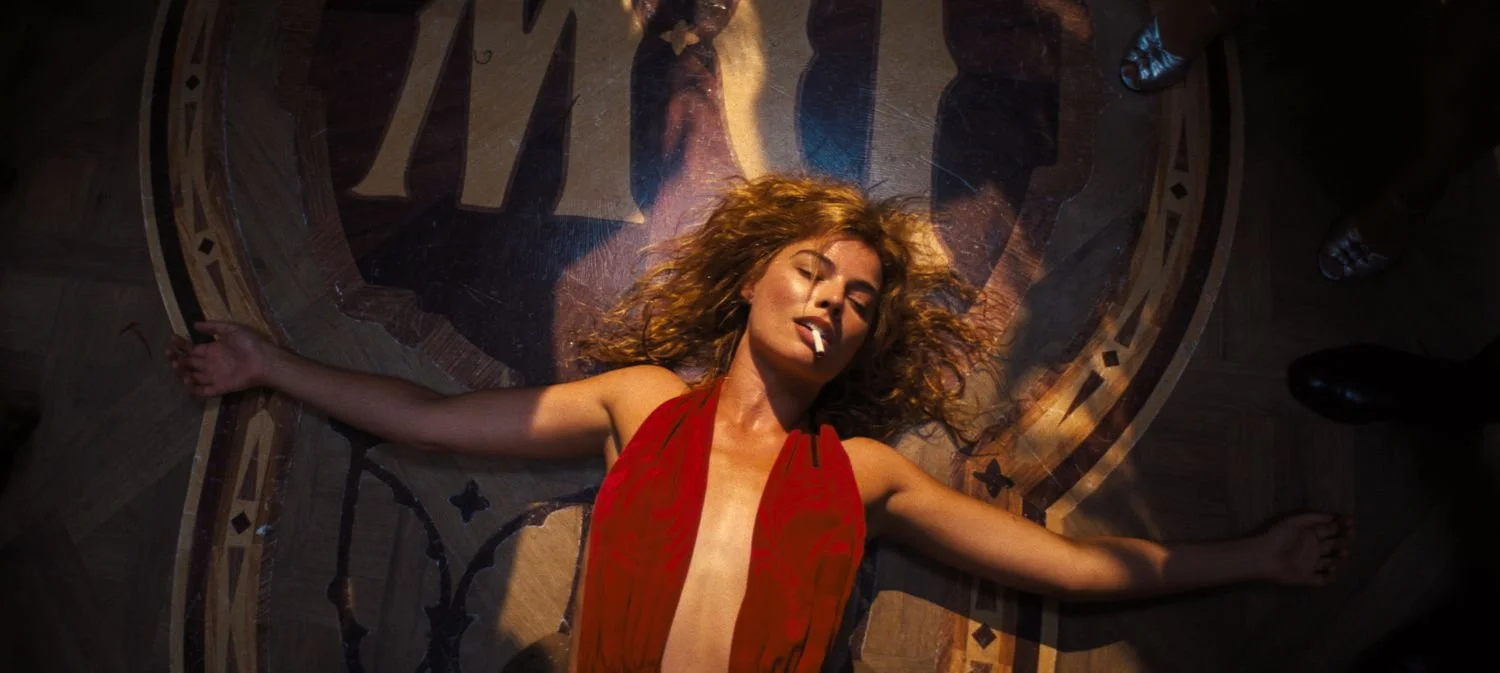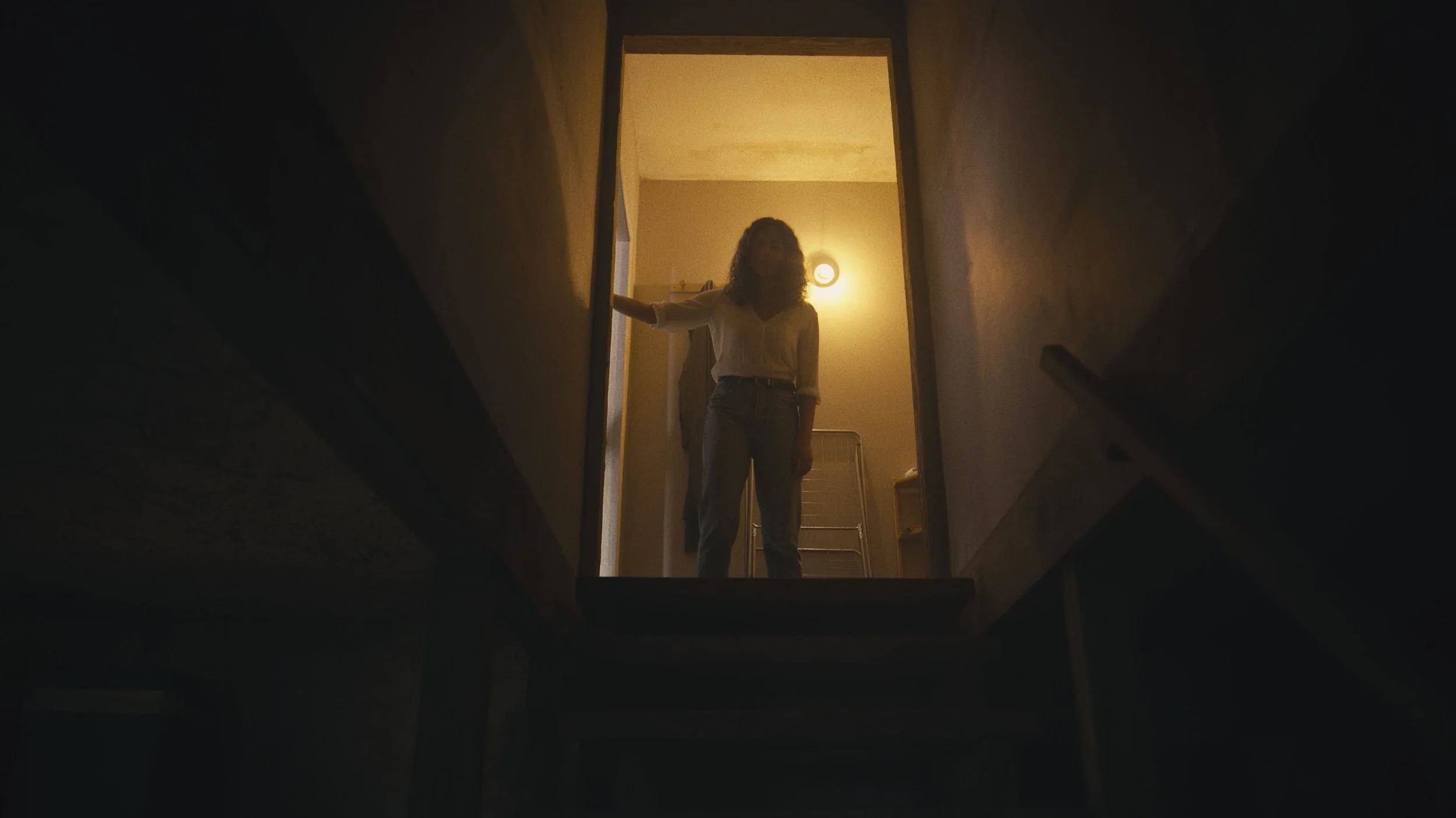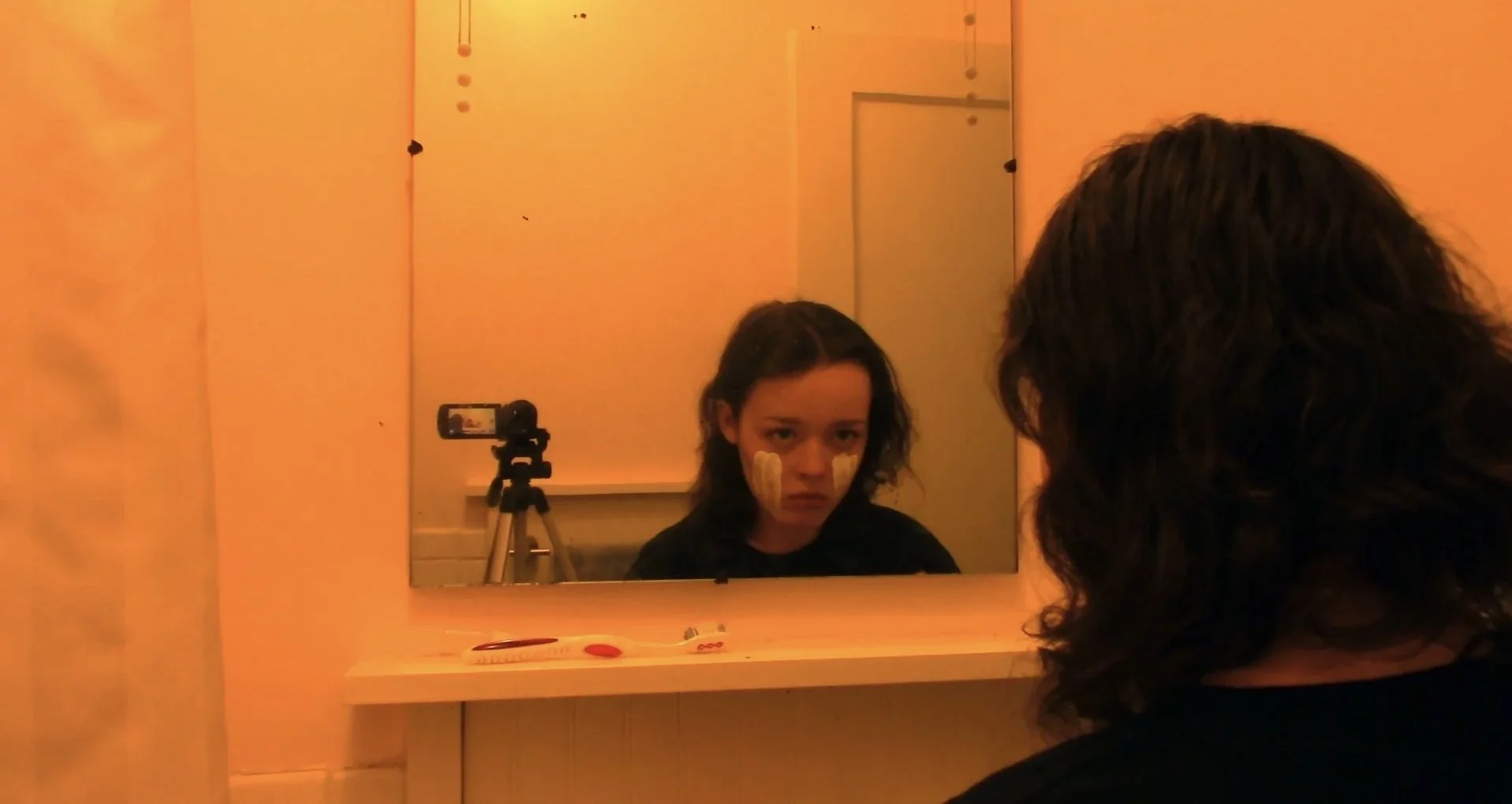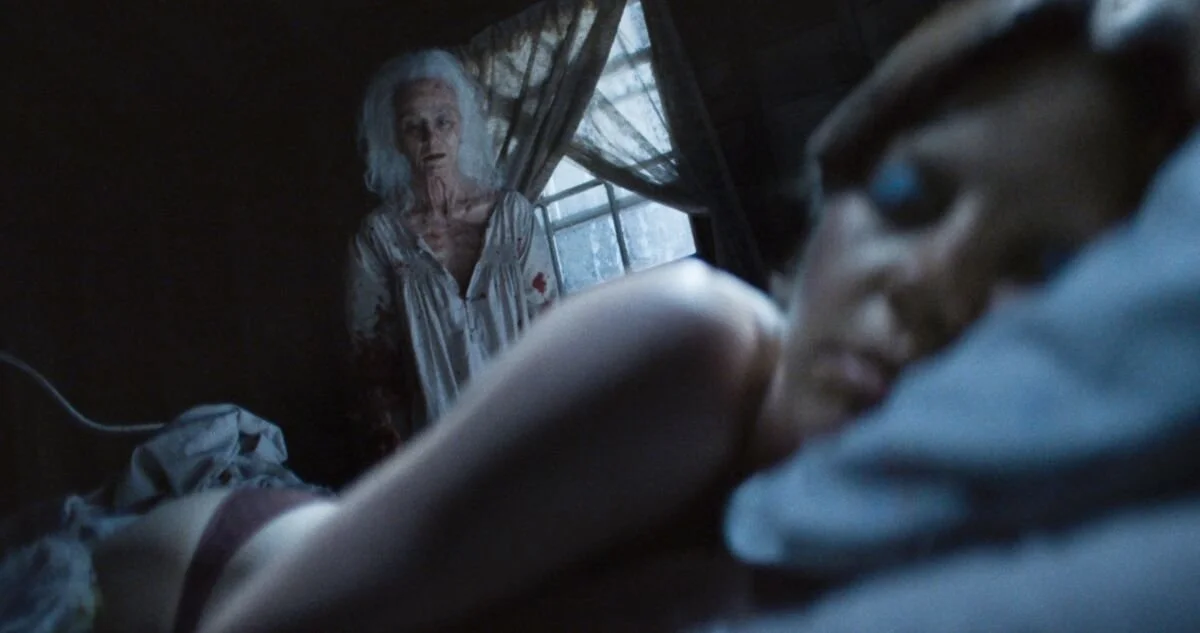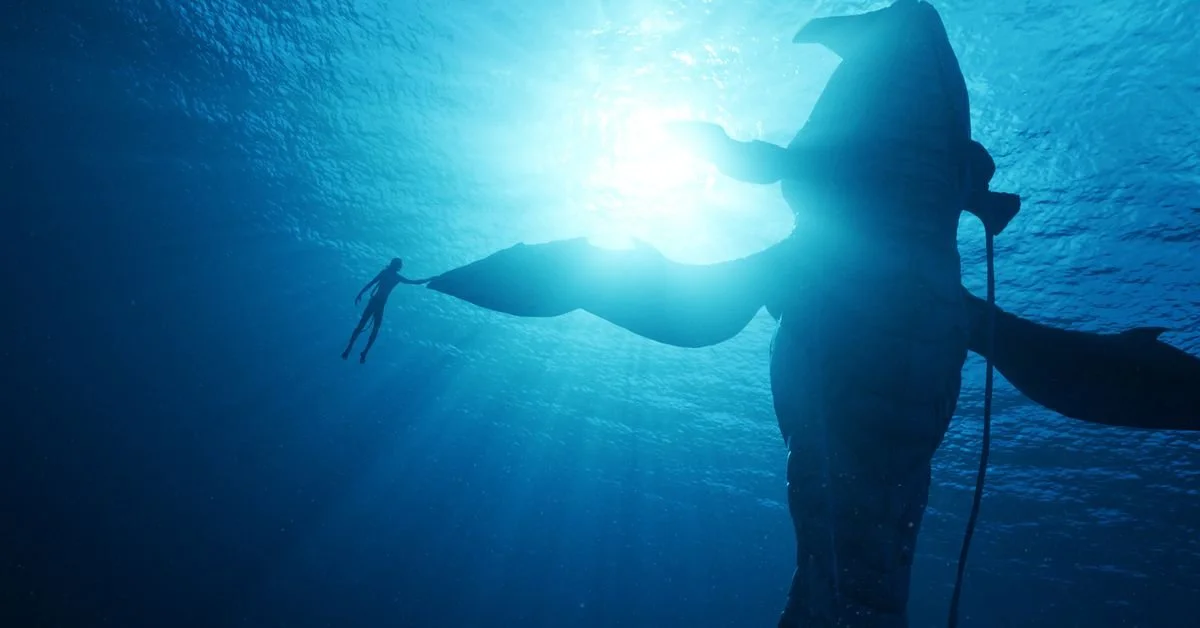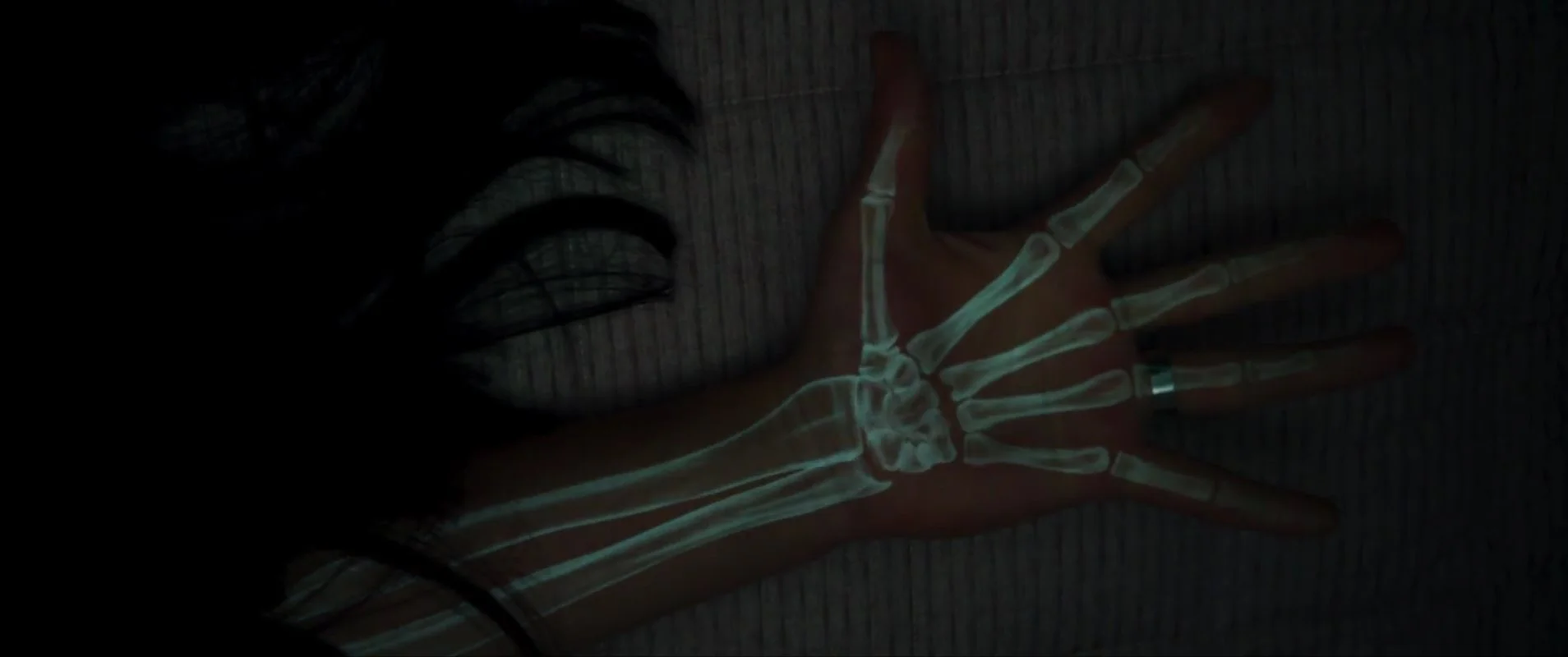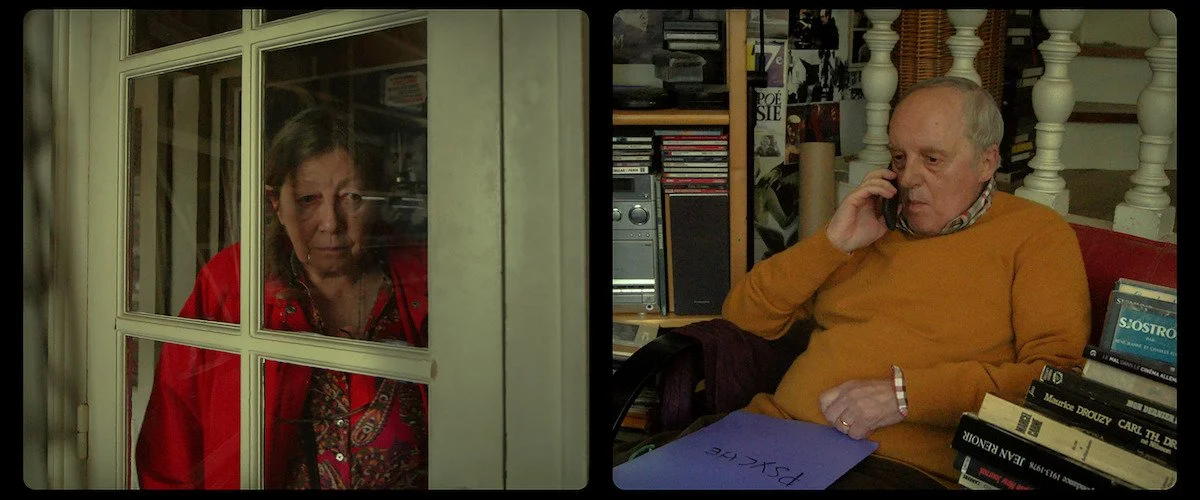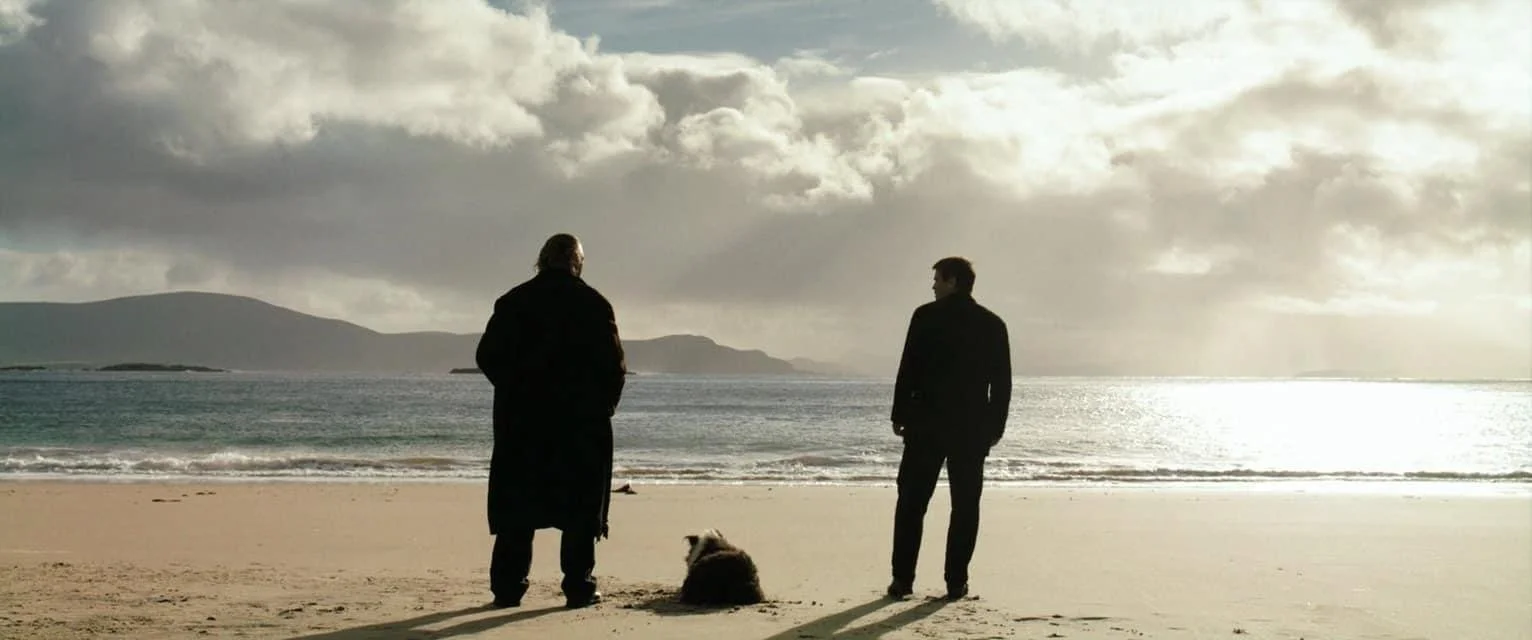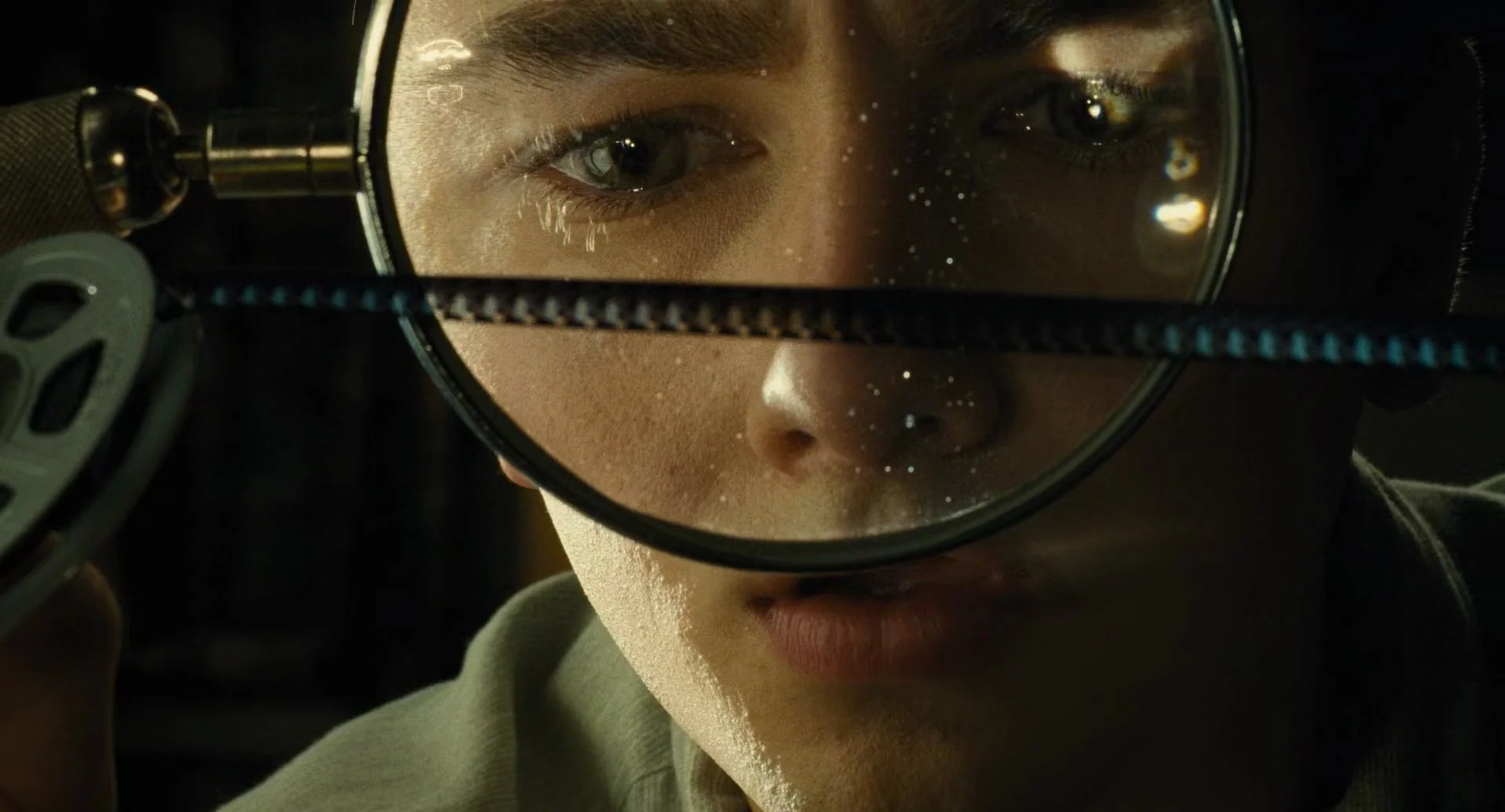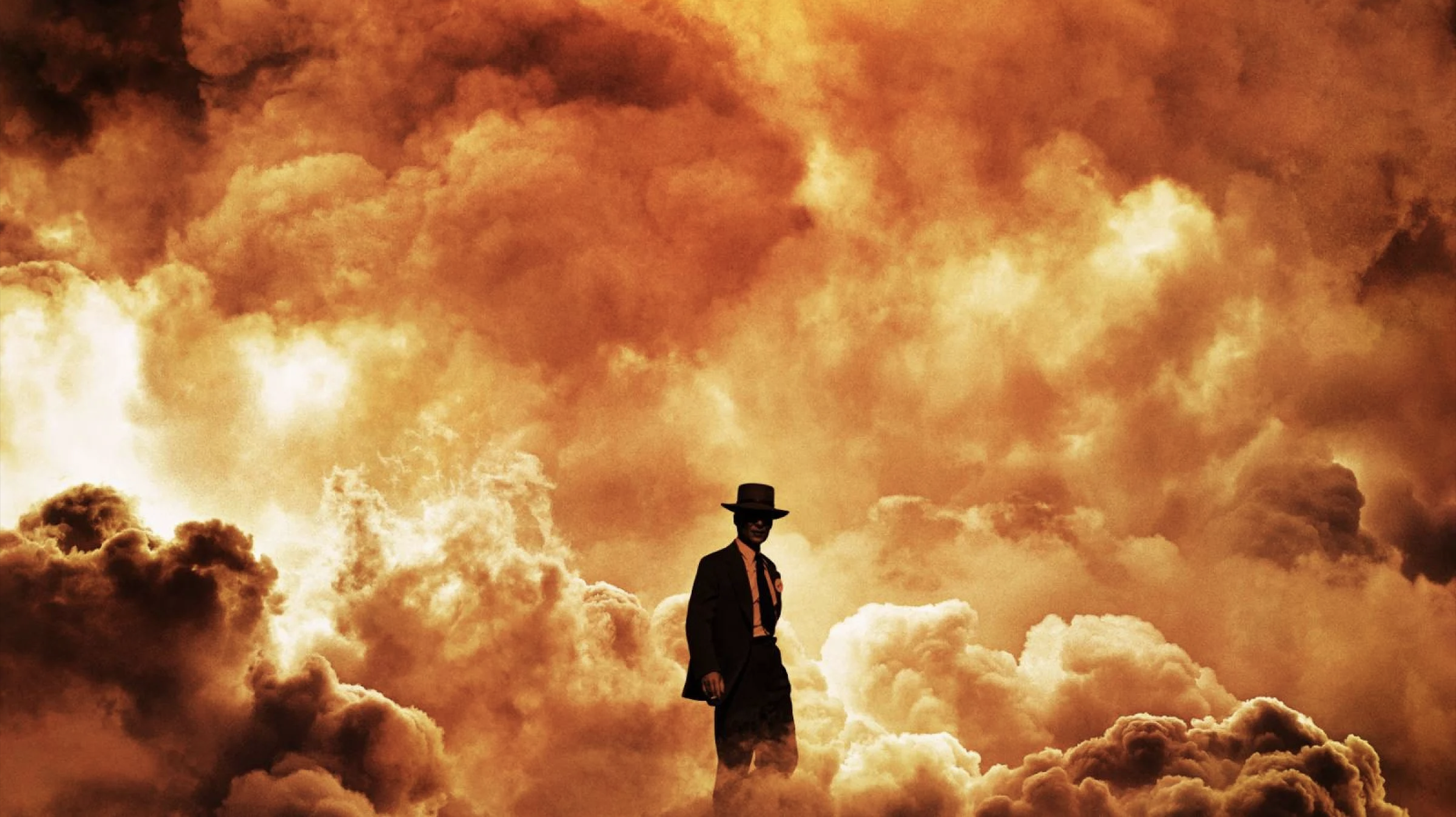The Fabelmans, Universal Pictures
It’s been a while since I’ve written about “the movies”. There’s more than a few reasons for that, but lets start things off on a positive note.
In the last few years, I’ve shifted away from casually writing film criticism to working on film sets and writing/developing my own projects that I intend on getting produced in the near future (ten year-old Austin wouldn’t believe me if I told him any of this). I value each and every set experience I’ve had since graduating film school, and I’m thrilled that I’ve been able to write more this year than I have in my entire life. In the past year alone, I’ve finished writing three short films - a comedy, a sports thriller, and a horror piece - as well as a full, feature-length script (with a second feature nearly completed at the time of this writing).
Not only that, but I’ve been grateful enough to hop on a few large-profile sets and help out where I can (mainly with production or editing work). I’ve learned a lot from working alongside some very talented individuals, and being able to watch the films I’ve worked on is still an odd, surreal experience each and every time. I acknowledge that being a cinephile with the opportunities I’ve had at my age is a privilege - it’s something I cherish and don’t take lightly.
Despite all this, and unlike many in my profession these days, I’ve still managed to keep up with the movies.
I know, what a concept!
Nope, Universal Pictures
I ended up watching over 100 new releases from 2022 this year, as well as over 200 “new-to-me” films, spanning from the 2010s all the way back to the 1920s. Why, you might ask? Why bother watching all these movies if I’ve already seen so many? Why even bother watching “old movies” now that modern films are “so advanced”, basically rendering older films “obsolete”? Or worst of all, why do I even care about watching movies, especially if I’ve made it onto large, high-profile film sets?
You might think that last question sounds silly, elitist, and/or even extreme - and you’d be right on all accounts. But sadly, I’ve heard different variations of all those questions I listed above. And sometimes, these statements don’t even need to be said to know how some people think. And I think that is relevant to any discussion about the movies today, because based on personal experiences I’ve had over the years, an alarming amount of people working on high-profile projects you’ve probably heard of act like they don’t need to watch anything new (or old) to know what they’re doing - because to some, they’ve already “made it”. And since they’ve “see it all” on set, what else is there to know?
Now, it is true that once you’ve work on film sets, you can’t really watch a movie with “fresh eyes” ever again (oh, how I wish I could…). However, I’m not a filmmaker who’s “too busy” or “too good” to watch movies. And, hopefully, if I keep my dignity over the next handful of years, I will never be a person who thinks like that. But for some reason, there’s a weird stigma in this field where many “in the know” feel like they’re above watching movies, instead of using them to enhance how they make their own films. I wish it wasn’t true, but more than a few individuals in this industry seem to care very little about the movies in general, or even the projects they work on for months on end.
Maybe some of this explains why the many of the films being produced today are worse they’ve ever been in the entire history of the art form.
The Bubble, Netflix
In an age where media literacy is at an all-time low, or given how much the film industry has taken a hit these past few years in a post-lockdown world, you’d think that the people lucky enough to work on these multi-million dollar projects would want them to stand out amongst all the other forms of content fighting for our eyeballs. Hell, at the very least, you’d think that they’d want to support these projects when they get released, or even hope, as silly as it sounds, that these films they work on can end up meaning something to those who might’ve fell out of love with “the movies” since the streaming boom (unfortunately) made watching films a passive viewing experience for most. Instead, I’ve had set workers ask me to take photos of their names in the end credits of films they’ve worked on because they themselves didn’t want to watch them.
Some industry workers don’t care that their field has been devalued to the point where most of the general public only see a movie or two a year. Believe it or not, a lot of professionals’ viewing habits are the same way. Some of them are also actively online, joining dogpiles aimed directly at the movies, and usually at the expense of risky (aka, original) films bombing at the box office. Do these people realize that each high-profile bomb in their field means less and less work opportunities for everyone in the future? Do they even care? Probably not, because they think the “new norm” (streaming) will save them, when that’s been proven to be a financial black hole, waiting to take all that get too comfortable with its endless blank checks and promises that subscriptions matter more than actual profits (they don’t). And in an age where most of these companies want people to stream everything that they watch, what happens when those almighty subscription numbers plateau? And would you believe me if I told you that in most cases, they already have?
Is that not scary to think about?
A lot people with comfortable positions in this industry probably don’t care about any of this. Like many in this fractured society, they would just rather drop you/ghost you and hire someone who’s more obedient (or someone they already know) than have to confront those challenging questions. Sadly, there usually seems to be more concern over what the snacks are at craft services than if the shots these people spent hours of their day setting up actually look good. And if people in the system don’t care about the work they’re putting out or how people consume them, why should audiences?
Blonde, Netflix
This is why I don’t believe any true filmmaker should think that way, especially when we need people in our field to care about what they’re making, now more than ever. Personally, I think keeping up with the movies is essential to anyone who’s serious about becoming a filmmaker. You’d think that’d be a given, but it’s not. And with online access to many classic films, countless pieces of critical analysis or behind-the-scenes footage just one Google search away, and even cheap, alternative solutions to viewing films in theaters (for example, AMC’s “A List” is a subscription service where one can see up to three films a week, every week, for only $25 a month), it’s bizarre, and frankly sad, that many people - even those who work on sets - find the experience of watching movies to be a chore. Or worse, they use these films as background noise while they scroll endlessly on their phones.
So, ironically, the movies have become my escape, not just from the terrors of the real world, but also from the stagnant, self-deprived film industry itself. To me, keeping up with current releases allow me to see what is (and what isn’t) connecting with audiences, but it’s also a way for me to see which filmmakers, if any, have managed to create genuinely great art in an increasing hollow, capitalist-dependent system, where box office numbers and sequel teases matter more than if a movie is actually good or not.
Some of you might be thinking to yourself, “Who the hell does this guy think he is? Bitching about how I or others should do their jobs?”
Well, I’ll tell you who I am - I’m someone who loves the movies. I’m someone who knows that they can be better. I’m someone who sees that modern filmmakers are as much to blame for our current movie landscape as the audiences who are (and aren’t) showing up. I’m someone who knows countless, talented artists who would kill to have the opportunities that those in charge have - and squander - on a daily basis. And most importantly, I’m someone who wants to see the film industry survive through the next decade. Think I’m over-exaggerating? Well, let’s look at the year in movies.
The Batman, Warner Bros. Discovery/DC
The film industry is expected to take in around $7.3 billion in 2022 between the United States and Canada. And while that might seem like a lot of money earned, especially in a post(?)-Covid world, this is actually down nearly 35% from 2019, back when things were “normal”. And if you take away juggernaut films such as Top Gun: Maverick and Avatar: The Way of Water, that percentage would be closer to 50% or even 60% less revenue than that year. Not good! But what’s being done on and off set to change this? Not much of anything.
And yet, despite some people’s (very troubling) insistence on wanting the communal movie-going experience to die a loud, public death, there were (thankfully) a handful of films that managed to break out theatrically this year. As a mentioned above, The Way of Water is currently kicking ass with audiences, even during a horrific blizzard that left many stuck inside their homes during the holidays. Other mega-hits include the aforementioned Maverick, but once again, it was the “usual suspects” in today’s IP driven-marketplace (superhero films) that “saved” Hollywood from itself. Hooray!
The Batman, a handsomely-crafted film, was definitely the high-point for the ever-growing sub-genre in 2022, despite being a familiar, somewhat empty experience (a good portion of the film is adapting the same graphic novel that The Dark Knight did all the way back in 2008). The film was one of the years earliest - and biggest - hits, grossing $767 million worldwide. But in a landscape where these projects cost enough money to make God shudder (the Matt Reeves-directed film, considered to be “small-scale” compared to its contemporaries, still cost over $200 million before marketing costs were factored in), a nearly one billion-dollar gross somehow wasn’t enough for Warner Bros. to immediately green-light the sequel, nor did it do much to help sustain their current financial woes.
The film itself, however, is regarded online as one of the years few bright spots - some calling it fresh, exciting, or even daring compared to most movies they saw this year. Frankly, if this is how we talk about a reboot of a reboot of a reboot - a superhero film pretending to be a serious crime movie (one that also pulls many of its “bold” stylistic choices from better films, such as Seven and Chinatown) - then we’re in a really bad place culturally.
But, for better or worse, these are the type of films that people seem to respond to, and these are the films that are keeping the lights on in theaters - both large chains and independent cinemas - all across the country.
Black Panther: Wakanda Forever, Walt Disney Studios/Marvel Studios
Other high-profile successes this year include two Marvel sequels: Doctor Strange in Multiverse of Madness (a decent-enough thrill ride whenever director Sam Raimi wasn’t held back by the restrictions put in place by the suits/rabid fans who are really in charge) and Taiki Waititi’s Thor: Love and Thunder, a wet fart of a movie that hopes audiences are too invested in their never-ending universe to realize that the people making these “films” stopped giving a shit about how they turn out a long time ago. That even applies to Wakanda Forever, a doomed-from-the-start sequel that had to manage without its lead actor - who was an integral part of the first film's cultural impact back in 2018. For some reason, those in charge of this highly anticipated follow-up thought it was a good idea to use what should have been a tribute movie as a trojan-horse for teasing their parent-company’s upcoming streaming releases. And while still a success, the film has made almost less than half of what the first did during its theatrical run.
Sony’s Mobrius, another absolute disaster on the superhero side of movies, hoped audiences would show the same gratitude towards their film that they did with Spider-Man: No Way Home the year before. Thankfully, the general public didn’t take the bait on that piece of shit, a product barely cobbled together in post-production. Audiences also skipped out on DC’s Black Adam, which couldn’t manage to find a larger audience at the box office, even with a superstar like Dwayne “The Rock “ Johnson headlining it. Funny enough, despite being widely regarded as a failure (so much so, that it’s been blamed for ultimately killing the troubled DC Extended Universe) the generic anti-hero flick is still one of the top ten grossing movies of the year domestically.
While ignoring that last part for a moment, these diminishing returns for some superhero movies in the marketplace could be signaling that audiences are starting to (finally) show a little fatigue towards these types of stories. But, in reality, it’s probably because some of those underperforming films didn’t have the “Marvel Studios” logo stamped in front of them. My point being, in today’s world where disposable income is less a given and more a privilege, people want security at all times. And some of these brand-names - the MCU films and the Jurassic Park movies - provide them that (Jurassic World: Dominion, despite being one of the worst films of the year, still managed to gross over a billion-dollars worldwide). Which tells me that, depending on the product, people are still willing to go to the movies. But when films like Black Adam are perceived as failures, despite being one of the most watched movies of the year, that’s when you know this business model (in its current state) is a failure.
But let’s move away from these large-scale movies for a second.
Everything Everywhere All At Once, A24
Other brands that found success this year included the studio/influencer A24, whose Everything Everywhere All At Once found near-universal acclaim and a had leggy box-office run in the Spring (making $70 million stateside, a record for the New York-based company). Some big-name streamers also found success with a few of their own break-out hits, such as Glass Onion & Purple Hearts for Netflix, Turning Red for Disney+, and Prey for Hulu. But when companies like Netflix count a view as any time someone watches a film for just two minutes, then maybe these products aren’t as successful as the companies disclosing their own numbers say they are.
Thankfully, there were a few success-stories in the industry that didn’t involve IP-related content, “universe-building”, streaming, or cost the studios a fortune (at least by Hollywood’s standards). If we’re not including any sort of adaptations, films like Nope, The Woman King, Smile, The Menu, The Lost City and Ticket to Paradise managed to break out theatrically, even amongst the bigger, nosier tentpoles. In a healthier film landscape, we’d see even more original films succeed, or even crack the top-ten yearly grosses. But at this point, I’ll take whatever “wins” I can get.
Sadly, as I mentioned earlier, there’s a disconnect between what's deemed successful by the industry and what the general public actually knows about, let alone watches. Most who aren’t keeping up with the industry like I do probably know one or two of the films I just named that aren’t superhero films, and one of those probably stars Tom Cruise. And to make matter worse, the there’s even a disconnect between the films that moviegoers actually went to see this year and the films that I responded to.
Armageddon Time, Focus Features
Many of the films I’ve listed above I’d label as “popcorn entertainment”. Not that there’s anything wrong with a film whose main intent is to entertain (one of the films in my top ten is purely there for its spectacle), but when that’s all that people watch - or worse, all that people are given - then that’s what they become trained to expect from all movies.
This means that art-house films, a sub-set of the industry that’s struggled to find larger audiences in the wake of the pandemic, probably feel more feel more obscure or snobbish than ever before. Many of the films I’m about to list in my personal top ten are probably ones you’ve never heard of. This isn’t me judging you or anyone else for not having seen films like Armageddon Time (which I barely got around to myself). It’s just troubling that the mere idea of seeking out these slightly challenging, idiosyncratic movies is almost frowned upon. So much so that many of these “art-house” films are quickly rushed out of whatever rinky-dink screen they occupied twice a day (usually at inconvenient times) for two weeks max before getting pushed out to make room for the thirtieth showtime of Minions 2 that day.
Most of these smaller films are dead-on-arrival, but not for no reason. Poor release strategies, lazy marketing, and bullying from certain studios, who force theaters - small and large - to prioritize their tentpole releases over smaller, adult-oriented films, are the most obvious factors here. Shortened release schedules and ridiculous premium rental prices are a few other reasons. But what truly hurts is that most people, even when get the opportunity to check these movies out (whether it be in theaters or in the comfort of their own homes), still decide not to support them. Because of this, we’ll be seeing less and less original movies over the next few years. And it’s not like like we were getting that many in 2022 to begin with!
Babylon, Paramount Pictures
You know things are getting real bad when a massive epic starring world-famous actors such as Margot Robbie and Brad Pitt - as well as the most recent film by Steven Spielberg (the man who basically created blockbuster entertainment as we know it today) - are labeled as “inaccessible” or “pretentious” and bomb spectacularly at the box office. That’s incredibly depressing to me, especially given that The Fabelmans is Spielberg’s best film in well over a decade, and Babylon is the type of film that many cinephiles “claim” they want to see.
In these bleak times where both filmmakers and the general public are letting the film industry down in equal measure, I have to remind myself what Quentin Tarantino recently said on his “Video Archives Podcast”:
“The good thing about being in a bad era of Hollywood cinema is (the films) that don’t conform [are] the ones that stand out from the pack.”
And while there’s less and less of these “non-conformist” films being made today, they truly do stand out amongst the others in the marketplace. And while many refuse to seek out these types of movies, there are definitely more than ten that I saw this year that gave me hope and/or that showed promise in an industry that nowadays leaves me feeling incredibly worried and unsure about its sustainability - or relevance - in the near future.
But enough with all the doom and gloom.
Aftersun, A24
Believe it or not, after that incredibly uplifting essay I just subjected you to (that’s if you’re still reading by this point), I had a hard time narrowing my “favorites” down to just ten films. Because if you know where to look, there’s plenty of “hidden” gems out there. Which is good, because it means that some still care about the movies.
But before I get into any of that, here are a list of films that I wasn’t able to get around to before writing this piece:
Aftersun
All Quiet on the Western Front
Bardo
Broker
EO
The Innocents
Nanny
Saloum
This Place Rules
The Whale
There are plenty more that I didn’t mention, but those are some of the more critically-acclaimed or higher-profile blindspots that I have to catch-up on
Now that all that’s out of the way, let’s talk about what I actually liked in 2022.
Honorable Mentions
Barbarian, 20th Century Studios
As someone who loves horror films, 2022 was an amazing year for the genre. Countless movies (some of which I’ll talk about later) showed the strength of the usually much-maligned genre, both artistically and financially. Deciding which ones made my top ten and which ones didn’t was incredibly difficult, especially when there’s so many to choose from.
Zach Cregger’s Barbarian, a sleeper hit back in September, proved to be one of the most entertaining films of the year, and showed how powerful “going in blind” can still be, especially when your reveals are as frightening - and fun - as they were in that low-budget fright-fest. And if your speed is something more nuanced or sophisticated, Jordan' Peele’s Nope deserves a shout-out. The film introduces audiences to the idea of “bad miracles”, and how people will search for spectacle anywhere, at any cost, even if that means capturing and immortalizing something that could kill you.
And lastly, if you’re a fan stop-motion animation, you need to check visual effects wizard Phil Tippett’s passion project Mad God for the craft on display alone. But you should that know the movie - a visual stunning descent-into-hell - is essentially a silent film. It’s also very fucked up, even by horror movie standards. You’ve been warned!
RRR, Hr Pictures/Netflix
Action cinema was also pretty strong this year, even if only a few of the non-superhero flicks broke out into the mainstream.
Top Gun: Maverick, one of the few films this year that I agreed with general audiences on, found Tom Cruise coming to terms with the fact that he is one of, if not the last of a dying breed (movie stars). How does he come to terms with this, exactly? He lets them (his haters) know that they’ll have to kill him before he he’ll ever hang up his jacket. After being delayed for years, Cruise and his team delivered on the pure, unadulterated entertainment they promised when making and marketing the movie. Without a doubt, it’s a better film than its predecessor (sorry, Tony Scott. Still love ya!).
Ambulance, Michael Bay’s throwback to his mid-90’s action roots, shows (accidentally or not) a messy snapshot of a country who’d rather turn itself into a massive, multi-million dollar police state than give its veterans basic healthcare (yes, you read that correctly). The film also boasts some of the best drone-photography i’ve ever seen in a mainstream action movie, as well as a completely unhinged, coked-out performance from Jake Gyllenhaal. I know most won’t give this film a shot because of Bay’s name alone, but know that it’s easily his best film in a long, long time.
Lastly, there’s RRR, the Indian Telugu-language epic whose cultural impact was felt even here in the states, where it’s become something of a cult favorite. The wild, three-hour action film from director S. S. Rajamouli is full of heart and has set-pieces that put most American productions to shame. It also has some awe-inspiring musical numbers thrown in for good measure, somehow making you wish the long runtime was even longer.
We’re All Going to the World’s Fair, Dweck Productions
The independent film scene may still be struggling to find an audience in 2022, but there was plenty to offer for those willing to look.
Jane Schoenbrun’s experimental horror film We’re All Going to the World’s Fair shines a light on the isolation, perils, and advantages that come with making your identity a completely virtual one. A truly unnerving film, one inspired by Creepypastas like Slender Man, that proves you don’t need millions of dollars and hundreds of crew members to make an effective visual experience.
Owen Kline’s Funny Pages, another independent film from the past year that I’d recommend, is a pitch-black comedy (shot on 16mm film) about a teenage cartoonist who moves out of his parents home to explore the grimy underbelly of the comic scene in New Jersey on his own. It’s a nasty little picture, but I laughed more during the last thirty minutes alone than I did during any other film released all year.
Two other films I wanted to highlight here aren’t really “independent” pictures like the two I named above, but in our current film scene, they might as well be. Apichatpong Weerasethakul’s Memoria is a meditative sci-fi mystery which is currently touring the country in a roadshow-type exhibition deal, where it’ll play exclusively in theaters, one theater at a time, until its run ends. If you’re open to slower cinema, try to check it out if it comes to your local city. Armageddon Time, on the other hand, is a personal family drama. Sold as a portrait of director James Gray’s early life, the thorny picture provides no easy answers for its viewers, whose morals will tested when characters are forced to see (and then ignore) the countless injustices happening around them in an increasingly capitalist society.
Kimi, Warner Bros. Discovery/HBO Max
As streaming continues to overwhelm Hollywood and the theatrical experience, more and more films that you would’ve seen at your local cinema as recent as ten years ago are now buried deep in the algorithms of multiple streaming services. And while some of these movies operate like modern direct-to-DVD films, there are still plenty of great options out there - just more spread out. So, let me recommend a few streaming movies I enjoyed that just missed my top ten.
Steven Soderbergh’s Kimi is an awesome, modern-day riff on classic Hitchcock thrillers, specifically Rear Window. Set during the Covid-19 pandemic, we follow an agoraphobic tech worker in Seattle who works from home monitoring her company’s Kimi devices (an Alexa-type stand-in). After monitoring a call where a horrible crime has taken place, things go south for the shut-in employee, who has to goes on the run from the corporation she works for. The film is available to stream on HBO Max.
Blonde, the fictional biopic about Marilyn Monroe from filmmaker Andrew Dominik, was met with intense negative reactions from general audiences and fans of the famous celebrity alike when it was released onto Netflix. But in a media landscape like the one today where performative moral superiority trumps any artistic expression, a film like this about someone like this was always destined to “fail”. Personally, I found the film to be a startling, yet gorgeous nightmare; chaotic and haunting with uneasy imagery and a truly captivating score from Nick Cave and Warren Ellis. Also, Ana De Armas gives one hell of a performance in a truly difficult role, told in blunt, dream-like vignettes. Even though I found many things to like about the film, I acknowledge that it isn’t for everyone (or even most).
Lastly, as an ex-Kanye West fan (I cannot and will not condone his comments/actions over the past year), the three-part film jeen-yuhs: A Kanye Trilogy is a beautiful, yet tragic look at a talented artist losing his way after gaining acclaim, popularity, and then having to deal with the loss of his mother - the only person he ever truly loved. Using never-before-seen archive footage, documentary filmmakers Chike Ozah and Coodie Simmons give audiences an outsider look at the man who influenced the music and fashion industries in major ways over the past two decades. Their unique perspective on the events that lead to Ye’s rise (and then their exclusive look at his current downfall) create a fascinating portrait of a man with so much talent, yet so many demons that he can’t seem to outrun (or, frankly, ones he doesn’t want to outrun). The three-part film is available to stream on Netflix.
And now…
My Favorite Films of 2022
10. Resurrection
IFC Films, Shudder
Only two films released in the year 2022 truly disturbed me. One of those films was Andrew Semans’ feature debut, Resurrection. Headlined by the exceptionally talented Rebecca Hall, this is not a movie to watch if you’re an incredibly anxious individual. Hall plays Margaret, a business woman who has total control over her life - that is, until a violent man from her past reemerges to torment her, just as Margaret’s daughter is getting ready to leave home for college. How will Margaret confront this person, and will their presence undo all the hard work she put in to forget the troubled past she left behind?
Part procedural, part revenge film, part surrealist nightmare, this bizarre presser-cooker of a film grabs onto those who dare to watch it and holds them tight, right up until the very last minute. If anything, the film is worth watching for the incredible six-minute monologue that Rebecca Hall unloads on a poor intern that works for her character around the halfway mark of the film.
Speaking of incredible monologues…
9. Pearl
A24
Pearl shouldn’t exist, at least not in its current form. The film, a prequel to the sleazy, grindhouse slasher flick X (which we’ll get to in a moment), only happened because Covid-19 forced the crew for the latter film to be stuck in New Zealand for an extended period of time. During this wait, writer/director Ti West and his lead actress, Mia Goth, crafted this X-cellent origin story, which at most, should’ve been a fun, if slight, B-side to their main project.
Funny enough, this technicolor tragedy ended up being as good, if not better, the main course meal.
Set in 1918 during the influenza pandemic, we follow Pearl, a young, disturbed woman, as she goes stir-crazy waiting on her husband to return from serving in the first World War. In the meantime, she lives with her German parents on their Texas farm, tending to their animals and helping out around the house (though not by her choosing). Her father is barely alive (and unable to speak), and Pearl’s mother is abusive and disapproves of her aspirations to become a movie star. To say more would spoil things, but let’s just say things get… dicey.
Also, the film ends on the greatest final shot of the year, and anyone saying otherwise hasn’t seen this movie - or is lying to themselves.
So, if you’re at all interested in this film, you might as well watch…
8. X
A24
Set in the late 1970s, X follows an eclectic group of amateur filmmakers and their talent, lead by aspiring adult actress Maxine (played by Mia Goth), as they set out to make a pornographic film at a remote farmhouse in the middle of Texas. Hoping to capitalize off the booming porno industry, the group instead finds themselves at the mercy of the insane elderly couple who own of the guesthouse they’re filming in.
Filled to the brim with energy, creativity, and an evident love for the cinematic art form, Ti West and his team crafted a love-letter to both horror films and the porn industry, linking the two in a violent, horny, symbiotic union to show audiences that craft and ambition aren’t just reversed for the big shots. Those on the fridges have aspirations, too, and some are willing to kill to get their voices heard.
A near perfect blend of style and substance, with a star-making performance from Mia Goth (or should I say performances?) to boot. As a horror fan and an independent filmmaker stuck in a media landscape where people seem to care less about the art and craft that goes into movies and moreso the plot and mind-numbing special effects, what more could I ask for out a movie?
7. Bones and all
United Artists/MGM
You’re probably thinking to yourself, “these have all been horror movies so far!” (I told you it was a great year for the genre). But in a such a strong field this year, the one that stood out amongst the rest was Luca Guadagnino’s Bones and All.
Abandoned by her father after she attacks a friend from school, a young woman named Maren embarks on a cross-country trip through the backroads of Reagan’s America with another teenage drifter, Lee. She soon discovers that Lee, like Maren, is also a cannibal. The two outcasts, learning to depend on one other, do - and eat - what they can to survive in a world that has all but tossed them out.
A film about acceptance and longing to be loved, this violent love story uses cannibals as a stand-in for a the opioid crisis, as well as the hostility shown towards queer people or those whose ideologies are against the norm - then and now. These outsiders, dealing with family trauma and broken homes in the rural mid-west, try running away from their problems, but that’s different from truly escaping them. Heartbreaking stuff.
6. Avatar: The Way of Water
20th Century Studios
People love doubting James Cameron.
The auteur filmmaker, who’s spent the past decade creating sequels to the biggest film of all time, Avatar, finally released the first of four(!) planned follow-ups, entitled The Way of Water, this holiday season. And once again, Big Jim did not disappoint.
Set a decade after the events of the first film, Jake Sully (now a Na’vi) and his wife, Neytiri, have a family of their own. But when the “sky people” return to exact revenge on those who drove them off the alien planet all those years ago, the Sully family is forced to relocate, taking refuge with the Metkayina clan, water-based Na’vi, who reside on a remote island called Omaticaya, found on the eastern seaboards of Pandora.
Once we settle in on Omaticaya, the film turns into a true masterclass of action-epic filmmaking. The 3D (a tool I usually find to be more of a burden than something that enhances a film) is incredible here. And the VFX, meticulously detailed as they are, fool the eyes into believing that the Na’vi on screen - and the water they swim, fight, and talk in - are all completely real. The final hour - a giant, multi-layered set-piece involving a sinking ship - is a beautiful cumulation of James Cameron’s career and everything he seems to be interested in as a filmmaker.
In the end, as someone who found themselves a little hesitant towards the idea of multiple Avatar films, I cannot wait to see what Cameron and his team come up with for the future installments. The best blockbuster film of the year, and it’s not even close.
5. Decision to Leave
Mubi
Decision to Leave is as thrilling as it is deeply romantic. The slow-burn mystery film, set in Busan, a foggy, highly populated city in South Korea, centers around an insomniac detective named Hae-Jun as he investigates a man's mysterious death in the mountains. Things only get more complicated for Hae-Jun when he starts falling for the dead man’s wife, Song Seo-rae - who also happens to be the prime suspect in her husband’s murder.
Park Chan-wook, no stranger to any student of cinema, pulls from Hitchcock to get the ball rolling, but makes this Korean thriller his own with gorgeous, powerful imagery, as well as getting strong, yet nuanced performances out of his two leads, Park Hae-il and Tang Wei. On top of all that, the film features some of the best camera tricks and transitions I’ve seen in any modern movie - stateside or abroad - in a long, long time. Definitely a film that will stick me as a viewer and as a filmmaker for years to come.
Highly recommended.
4. Vortex
Srab Films
Remember when I said there were only two movies this year that truly disturbed me? This was the second film.
Vortex, a split-screen nightmare about an elderly couple losing themselves to dementia, is the toughest viewing experience I had all year. After being diagnosed with a brain hemorrhage that almost killed him in early 2020, Gaspar Noe used his near-death experience to craft the most mature film of his career. Allowing both sides of the frame to show audiences two different perspectives at the same time, Noe challenges the way we as viewers watch movies, as well as the lives of those whose point-of-view we can’t even begin to understand.
The experimental French film, headlined by Italian filmmaker Dario Argento (in his first leading role) and Françoise Lebrun, is by far one of the most effective and realistic portrayals of what can only be described as soul-sucking disease, and how it affects the loved ones who are usually left to care for those struggling individuals. Noe’s punishing exploration of death and endings in general starts with a dedication, which in my mind encapsulates the whole meaning of the film:
“To all those whose brains will decompose before their hearts."
3. The Banshees of Inisherin
Searchlight Pictures
In these volatile times, we’ve all probably experienced a situation where we (myself included) have found ourselves feuding with those close to us - family members, loved ones, best friends. But what does one do when that person close to you decides enough is enough and distances themselves from you? Or worse, what does one do when that person you care about doesn’t even tell you why they’re done with you?
Martin McDonagh’s dark comedy The Banshees of Inisherin tackles these ideas head-on, resulting in a hilarious, yet tragic tale of two life-long friends - Pádraic (Colin Ferrell) and Colm (Brendan Gleeson) - who spent every moment together on the quiet, remote island of Inisherin - until one day, they don’t. Set at the tail end of the Irish Civil War in 1923, we watch two men deal with their own insecurities and masculinity, unable to let the other one-up them, while also telling a story about creative people who are worried that “hanging around” all the time will result in a life left unfulfilled. But what does that mean for those who love spending time with them?
While it’s sad to watch how far these two men will go to prove their own points, the film has strong, beating heart, making it a worthwhile experience to those interested in the simple, yet strong hook the film presents - and, thankfully, more than delivers on.
2. The Fabelmans
Universal Pictures
Steven Spielberg is getting old. To make matters worse, the titan filmmaker, now 76, no longer has his parents in his life. And if you know anything about the man, you know how much his parents not only shaped him as a person, but how they helped him shaped the current film industry. So, it was only a matter of time before Spielberg made a movie about them, his childhood, and how he became the groundbreaking filmmaker we all know him as.
The Fabelmans, a fictional re-telling of the Spielberg household, is less a love-letter to cinema and more about how Sammy Fabelman used cinema to control the uncontrollable. Unable to shake the terror he felt when watching a train-crash in spectacular fashion up on the big screen, a young Sammy uses his camera, not because he has a story to tell, but because he has to capture the image he can’t get out of his head. Only then will he feel free again.
This mindset stays with Sammy throughout his childhood, where it come into play as his parents move from city to city, before ultimately going through an ugly divorce. What Sammy sees through his camera helps him navigate through his dysfunctional upbringing, seeing his family through his art, and showing how the two can become interconnected, even when you don’t want them to be. For my money, this incredibly personal, introspective movie is among Steven Spielberg’s best, and given his acclaim and stature in this industry, that’s no throwaway statement.
1. Tár
Focus Features
Of all the films - good and bad - that I saw released in 2022, Tár ended up being my personal favorite.
Todd Field’s cold, calculated return to filmmaking (after stepping away from the industry for over a decade), is as bold and interesting as films in the current era are going to get. The film follows Lydia Tár, one of the greatest living composer-conductors (with an EGOT, to further highlight her incredible talents) as her life in the clouds starts to collapse in around her.
A Rorschach test beautifully disguised as a psychological drama, the expertly-directed film doesn’t give audiences the answers they’ve been trained to expect in a culture that coddles all - kids and adults alike. Instead, Todd Field and his collaborators ask their audience to determine on their own how Lydia Tár’s actions, or lack thereof, make them feel. Are the claims made against her baseless? And if not, is she too talented of an individual to “ruin”? And if so, where does one draw that line, especially in an age where information can be easily misinterpreted out of context or worse, be manipulated?
The film, which carefully avoids being a film about “cancel culture”, highlights how different our worlds can be, even though at the end of the day, we’re all human beings.
And that’s that on 2022!
So what’s next? What lessons from the films of 2022 should we take with us into 2023, and the years beyond?
Oppenheimer, Universal Pictures
One takeaway is that even though there were a ton of good movies that came out this year, they were overwhelmingly outnumbered by the bad (or painfully mediocre) ones. That’s the fault of both the filmmakers who keep allowing dogshit and/or mediocrity to become the standard set on and off set, and the general public, very few of whom are willing to venture outside their comfort zones anymore to actually watch films that aren’t just escapism or telling them what they already know/want to hear.
Another lesson learned since the start of the pandemic is that it doesn’t matter if your film is “good” anymore. Those of us who take part in this industry have to actually put in the work to make people care again. Because if people behind the camera don’t care, and the general public (who are obsessed with any and all forms of media content today) don’t care, then what the hell are we even doing here?
I think about these things constantly as I develop my own projects, and I can only hope this industry will still be alive by the time my talented friends and I can prove ourselves in ways that we feel those with opportunities right now are not. Because even though the movies are in a bad spot right now, this isn’t the first time they’ve been in danger of going extinct. The transition from silent films to talkies, the birth of TV, and the change from film projection to digital, to name just a few of the seismic shifts this industry has had to face. And yet, the century-old art form is still alive today. But it needs to adapt if the movies want to stay relevant in the way that they have been for past one-hundred years.
If you made it to the end of this piece, thank you for reading. I know that was a lot. Hopefully I haven’t upset or offended anyone, but honestly, I don’t think I said anything out of line and/or not already obvious to those willing to look. In fact, I hope you read this and agreed with some what of I had to say. But if not, that’s okay. If I’m lucky, at the very least, I’ve helped convince someone, even just one person, that it’s still important to care about the movies.
Sincerely,
A (usually uncredited) set worker, an independent filmmaker, and a full-time cinephile

